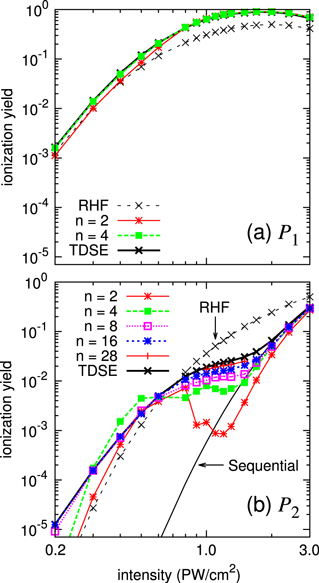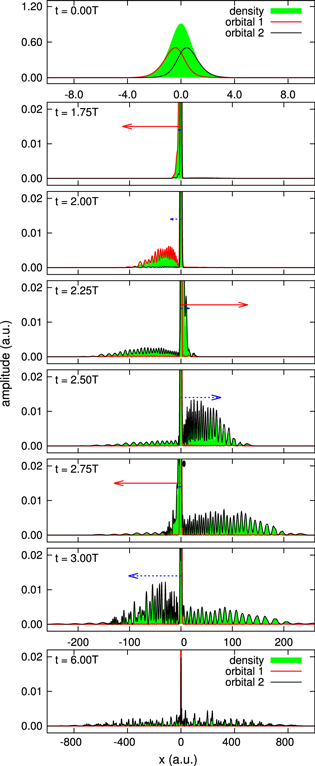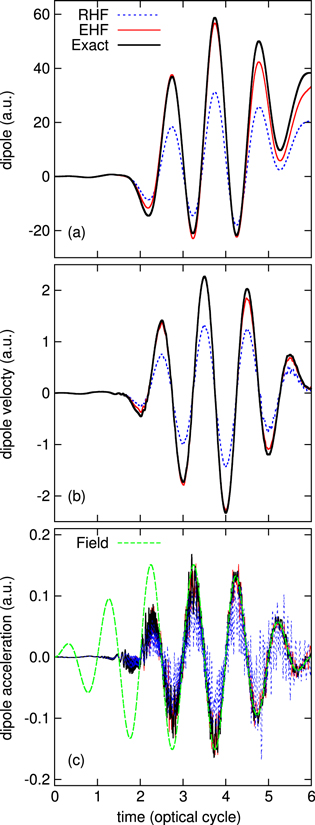The structure of approximate two electron wavefunction in intense laser driven ionization dynamics (2014)
Abstract:
The structure of approximate two-electron wavefunctions in strong-field-driven ionization dynamics is investigated in depth, both theoretically and numerically. Theoretical analyses clarify that for two-electron singlet systems, the previously proposed time-dependent extended Hartree–Fock (TD-EHF) method (1995 Phys. Rev. A 51 3999) is equivalent to the multiconfiguration time-dependent Hartree–Fock method with two occupied orbitals. The latter wavefunction is further transformed into the natural expansion form, enabling the direct propagation of the natural orbitals (NOs). These methods, as well as the conventional time-dependent Hartree–Fock (TDHF) method, are numerically assessed as regards providing a description of the ionization dynamics of a one-dimensional helium atom model. This numerical analysis (i) explains the reason behind the well-known failure of the TDHF method to describe tunneling ionization, (ii) demonstrates the interpretive power of the TD-EHF wavefunction in both the original nonorthogonal formulation and the NO-based formulation, and (iii) highlights different manifestations of the electron correlation (an effect beyond the single-determinant description), in tunneling ionization, high harmonic generation, and nonsequential double ionization. Possible extensions of the NO basis approach to multielectron systems are briefly discussed.
Source:
T. Sato and K.L. Ishikawa, The structure of approximate two electron wavefunction in intense laser driven ionization dynamics, J. Phys. B, 47, 204031 (12 pages) (2014) (http://dx.doi.org/10.1088/0953-4075/47/20/204031)



